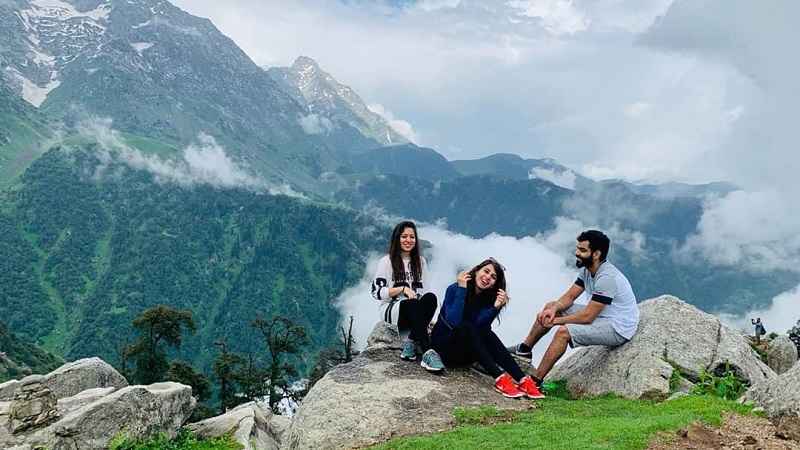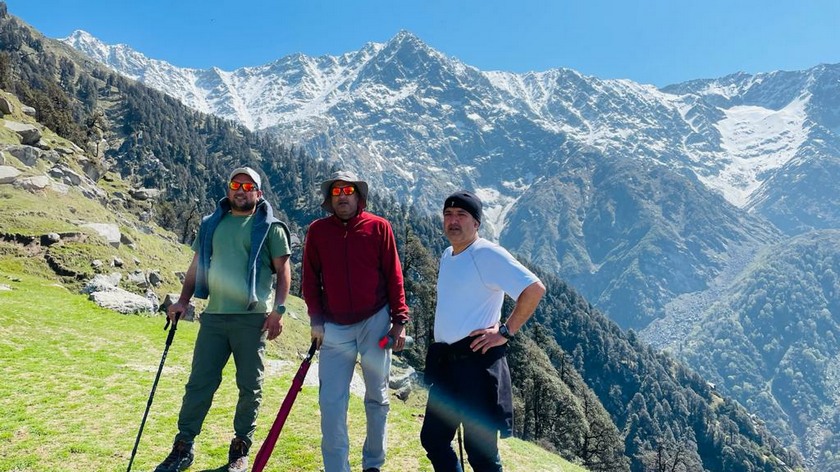The Ultimate Guide to the Triund Trek by iBestTravel
Nestled in the lap of the Dhauladhar ranges, Triund is a beautiful Himalayan trek that offers mesmerizing views of the surrounding mountains and valleys. At an altitude of 2,975 meters, the Triund trek is perfect for both novice and experienced trekkers seeking a moderately difficult adventure near McLeod Ganj. The 9 km uphill trek leads you through dense rhododendron and oak forests, gurgling streams, and lush meadows. The spectacular scenery coupled with the promise of camping under a starry night sky makes Triund an extremely popular trekking destination. Here is a comprehensive guide to help you plan your Triund trek.
Getting to McLeod Ganj
The trek to Triund begins from McLeod Ganj, located around 9 km from Dharamshala in Himachal Pradesh. McLeod Ganj is well-connected by road and air. The nearest major airport is Gaggal Airport in Kangra, approximately 15 km away. Taxis and buses are readily available to transport you from the airport to McLeod Ganj. Additionally, many tourists opt for an overnight bus ride from Delhi to reach McLeod Ganj, while others may drive from nearby cities like Chandigarh, Shimla, and Manali.

Once you reach McLeod Ganj, take some time to soak in the quaint Tibetan vibes of the town. Visit sights like the Dalai Lama Temple, Bhagsunag Temple, and Waterfall, along with the charming cafes dotted throughout the streets. You can also browse markets to purchase trekking gear and equipment. It’s advisable to spend a night acclimatizing and preparing for the trek. The trail to Triund starts from the Galu Devi temple in Upper Dharamkot, approximately 2 km from McLeod Ganj.
The Ascent to Triund
The trek to Triund is 9 km long one way and usually requires around 4-5 hours. Starting early in the morning is crucial to avoid the harsh afternoon sun. The trail is steep but well-defined, allowing you to take your time and relish the breathtaking views. The initial 5 km stretch consists of switchbacks weaving through dense oak and deodar forests. You’ll hear the soothing sounds of crickets and cicadas as you ascend. Don’t forget to stop frequently to hydrate and snack on energy-boosting food.

After the first 5 km, the forest opens to reveal gorgeous rhododendron trees and shrubs, particularly stunning with their bright red blooms in spring against the clear blue skies. You will also pass two lovely cafes – the Magic View and Snowline Cafe – where you can take a break and sip a hot cup of tea. Beyond the cafes, the ascent becomes steeper, but the paths are adorned with beautiful wildflowers. The final 1 km is a relentless climb over rocky terrain. However, push through, and you’ll soon reach the summit, met by breathtaking views of the snow-capped Dhauladhars.
Reveling in the Splendor of Triund
The heavenly Himalayan panoramas make all the effort worthwhile. Find a comfortable spot, sit back, and indulge in the sweeping views. To the east, the Indrunag and Deo Tibba peaks dominate the landscape. The sharp pyramidal peak of Indrunag above the Kamrunag Lake creates an exquisite view. To the north, the stunning ridge-line of the Dhauladhars, capped with snow even in summer, draws the eye. The iconic Hanuman ka Tibba stands majestically amidst the peaks, offering a sight to behold. Below lies the picturesque Kangra valley, plentiful with villages and interlaced by rivers.

As the sun sets, the colors shift to burnished gold, giving the mountains an ethereal glow. No matter where you look, a majestic Himalayan view unfolds. The interplay of light and shadows across the mountains is simply mesmerizing. Stargazing on clear nights reveals numerous constellations overhead.

For an adventure-packed experience, consider using Triund as a base camp for a steep trek to Laka Got, which sits at 3,500 m. This trek takes about 1.5 hours to reach Laka Got and offers even more stunning vistas. The path, being above the tree line, can be steep and can feature slippery snow during certain seasons.
The Abode of Snow: A Walk to Laka Got
As you enter the ‘Abode of Snow,’ you will find yourself surrounded by snow-covered peaks on all sides, making it a surreal experience. Tiny wildflowers, such as Primulas and Buttercups, sprout around you, adding color to the barren terrain. When you look back, you can see Triund far below. Finally, upon reaching Laka Got, you will be greeted by sweeping snowscapes, giving a sense of serenity and isolation.
Descending from Triund
After a rejuvenating night’s rest at Triund, it’s time to descend using the same trail. To ease the strain on your knees, consider using trekking poles. Make sure to stop at the cafes you visited on your ascent for some refreshments. The shaded forest trail makes for an easy walk downhill once you have crossed the rhododendron section.

The beauty of the Dhauladhars will linger in your memory as you make your way back. You may also visit the Bhagsu Nag waterfall on your return to relax your weary legs. Conclude your trek on a sweet note with delicious Tibetan tulpas, momos, and pancakes in McLeod Ganj.
The Best Time for Triund Trek
The ideal seasons for the Triund trek encompass February to June and September to November. Winter months can be frigid, with chances of snowfall. The monsoon months of July and August may bring landslides and slippery trails; therefore, it’s best to avoid trekking during this time. The post-monsoon spring blooms of March to April and the pre-winter autumn of October to November provide particularly pleasant trekking conditions. Be sure to prepare accordingly with proper gear, clothing, and essentials, and try to start early to avoid the midday heat in summer.

To ensure a successful trek, careful preparation and packing are crucial. Here is a comprehensive Triund trekking checklist for a safe and comfortable journey:
- Trekking shoes: High-ankle waterproof shoes that provide a good grip and ankle support. It’s advisable to break them in before your trek to avoid blisters.
- Woollen socks: Carry at least 2-3 pairs of warm woollen socks; avoid cotton socks as they absorb sweat.
- Trekking pants: Lightweight, quick-dry pants are preferable; denims are not recommended as they become heavy when wet.
- Quick-dry t-shirts: Full-sleeve t-shirts will protect you from sun exposure; avoid cotton shirts that do not dry quickly.
- Fleece jackets: It’s wise to carry at least one thick, warm jacket for chilly nights and early mornings.
- Waterproof jackets: A waterproof and breathable jacket will help protect against unexpected drizzle while trekking.
- Woollen caps and gloves: Essential for keeping warm in chilly high-altitude conditions.
- Sturdy trekking pole: Provides support on steep sections and reduces pressure on your knees when descending; ensure it’s adjustable to your height.
- LED headlamp: A headlamp makes navigating the trail at night much easier; handheld flashlights may be inconvenient.
- Sunscreen, sunglasses, and hat: Protect against sunburn and prevent snow blindness at high altitudes.
- Toilet paper: Always carry a roll, as facilities are minimal; be sure to dispose of it responsibly.
- Hand sanitizer: Maintain hygiene in absence of water; carry disposable tissues as well.
- First aid kit: Include band-aids, ointment for blisters, pain relief spray, etc., and familiarize yourself with their usage.
- Snacks: Ensure you have high-energy snacks such as dried fruits, protein bars, and chocolate.
- Water: Carry at least 2 litres in insulated bottles, which can be refilled at cafes during the trek.
- Backpack: A 30-40 litre backpack with hip straps will help distribute the load effectively.
- Sleeping bag: Essential for overnight camping; ensure it’s rated for sub-zero temperatures.
- Mats: Use mats for ground cushioning and insulation from cold surfaces.
- Toiletries: Pack a toothbrush, toothpaste, biodegradable soaps, and other essentials.
- Extra clothes: Bring comfortable slippers, a warm jacket, an extra pair of socks and underwear.
- Emergency supplies: Carry a torch, lighter, Swiss knife, emergency blanket, basic medications, and a phone charger.
- Plastic bags: Use bags to separate wet items and trash, keeping your backpack organized.
With the right gear and supplies, your trekking experience will be enjoyable and safe. Avoid carrying unnecessary items to minimize weight. Remember that rental shops in McLeod Ganj offer most hiking supplies if you prefer to travel lighter.
Acclimatization and Altitude Sickness
Given that Triund is situated at an elevation of 2,975 m, proper acclimatization is imperative to avoid altitude sickness. Here are some tips to effectively acclimatize:
- Sleep at a lower altitude, like McLeod Ganj, the night before you begin your trek.
- Ascend gradually and ensure to take breaks periodically.
- Avoid overexertion to keep your body from reacting badly to the altitude.
- Stay well-hydrated throughout the trek.
- Steer clear of alcohol or smoking a day prior and during your trek.
- Consume light, protein-rich meals rather than heavy, greasy foods.
- Consider carrying Diamox if it has been prescribed by your physician, as it can assist with acclimatization.
Be vigilant for symptoms of altitude sickness, including headaches, nausea, dizziness, and shortness of breath. If you experience any of these symptoms, inform your trek leader immediately, descend to a lower altitude, and refrain from strenuous activities. Seek medical assistance if symptoms persist or worsen. With the correct acclimatization strategies, you can safely enjoy the majestic beauty of Triund.
Have you trekked to Triund? Please share any tips and experiences below!




